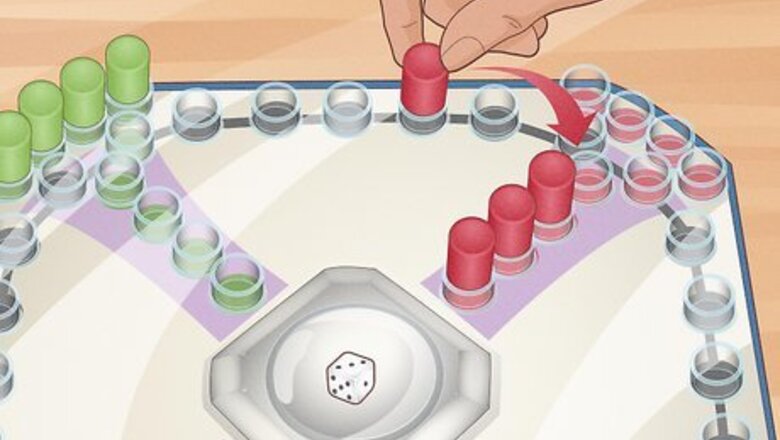
views
- Roll a 6 to move one of your 4 pegs from Home to the Start space.
- Take turns popping the die in the center of the board to move your pegs clockwise around the board.
- Bring all 4 of your pegs into your Finish line to win the game.
Objective
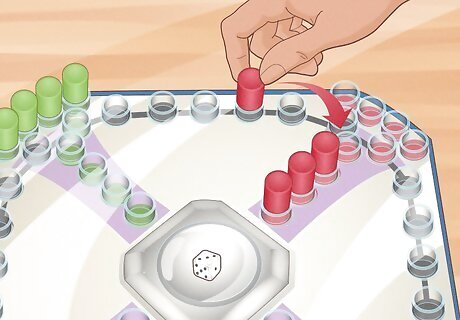
The goal is to move all 4 of your pieces around the board to the Finish line. Each player has 4 plastic game pieces that they must move around the game board. Your pieces start in the Home section. You and the other players then take turns moving your pieces one at a time around the board clockwise until someone gets all of their pieces in their Finish line.
Setup
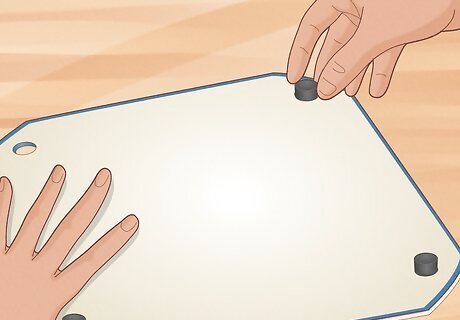
Assemble the game board. Each game set comes with a plastic game unit that includes the Pop-O-Matic die roller, a game board, 16 plastic colored pegs, and 4 rubber gameboard feet. Turn the plastic game unit upside down and place it on a flat surface. Flip the game board over so that it’s face-down and place it directly on top of the game unit. Align the holes in the 4 corners exactly, then insert the rubber gameboard feet into each hole. Trouble contains small game pieces that can be a choking hazard for young children. This game is not meant for children under 3 years old. Some Trouble game sets already come pre-assembled.
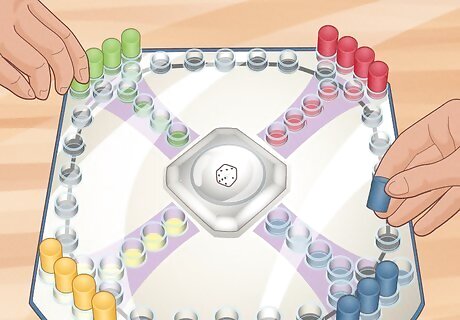
Place the colored pegs in the correct Home sections. Each Home section holds 4 pegs of the same color. Have each person select which color they’d like to play and sit around the board so that you’re closest to your Home. A minimum of 2 people and a maximum of 4 people can play Trouble. If only 2 people are playing, you have the option to play with 2 sets of pegs each. For example, you might play blue and red while your friend plays green and yellow.
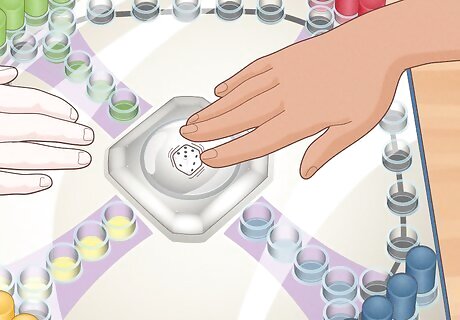
Decide who goes first by popping the die. Take turns rolling the die by pressing down on the Pop-O-Matic at the center of the game board. Whoever rolls the highest number will start the game. Other ways to decide the playing order include going by age, height, or playing rock, paper, scissors.
Game Play
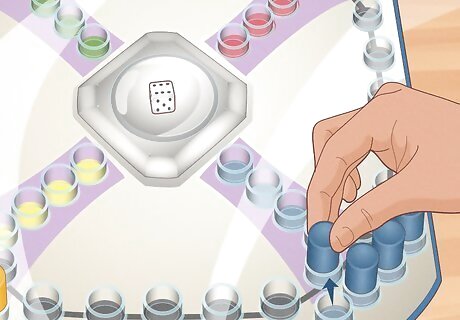
Get your pieces out from Home by rolling a 6. When it’s your turn, press the Pop-O-Matic at the center of the board to roll the die. You get one pop, and you must roll a 6 in order to move one of your pegs from Home onto the Start spot (labeled “Start” on the board). If you don’t roll a 6, wait until your next turn to try again. Rolling a 6 also means you get an extra turn. Roll the die again to keep playing. Only one peg can be moved out of Home at a time. You must roll a 6 every time you want to take a peg out of Home. If you roll a 6 but already have a peg on the Start spot, you can’t take another peg out of Home because the Start spot is full. Instead, move the piece that’s on the Start spot 6 spaces forward and try to get your peg out of Home on another turn. In some variations of the game, if you roll a 1, all of the other players get to take one of their pegs out of Home and you don’t get to move your pieces.
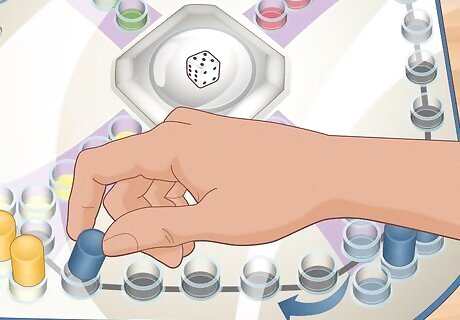
Move your pegs clockwise around the board. When it’s your turn again, pop the die and move one of your pieces clockwise around the board however many spaces the die tells you to. Count each space whether it’s occupied or not. After you’re done moving your piece, it’s the next player’s turn. There are also 4 “double trouble” spots on the board, marked by two Xs. When you land on one of these spots, you get an extra turn.
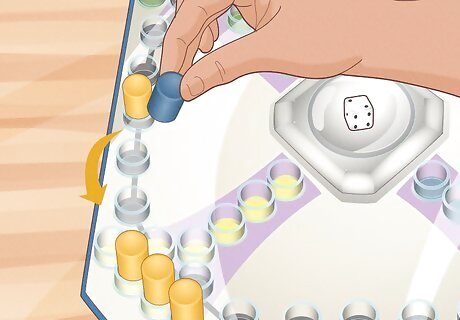
Send players back Home by landing on their pieces. If one of your pegs happens to land on a spot that’s already occupied by another player, you get to send their piece back Home, and they have to start from the beginning. Similarly, you can send an opponent’s piece back to their Home if they’re in your Start spot when you take a peg out of your Home. Some people play so that you get an extra turn each time you send an opponent’s piece back Home.
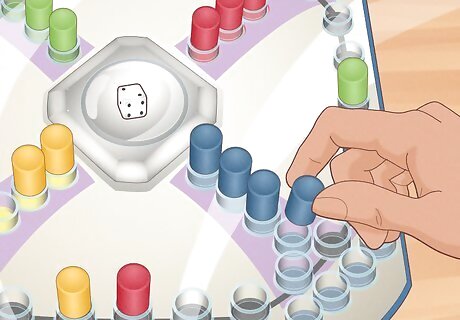
Bring all of your pegs to the Finish line to win. Each peg must make 1 complete lap around the gameboard before entering the Finish line. To move your pegs into these spots, you must roll the exact number needed to get into a Finish line spot. So if you only need a 2 to get into a spot but roll a 5, you can’t move your piece to the Finish line. The first person to get all 4 of their pegs into their Finish line wins. Your Finish line is the same color as your pegs. Once your peg is in the Finish line, your opponents can’t send that peg back Home. Pegs can move within the Finish line if you roll the exact number needed. For example, if your peg is in the second to last spot, and you roll a 1, you can move that peg forward one space. If you have more than 2 players, keep playing to see who comes in second, third, and fourth place.
Game Variations
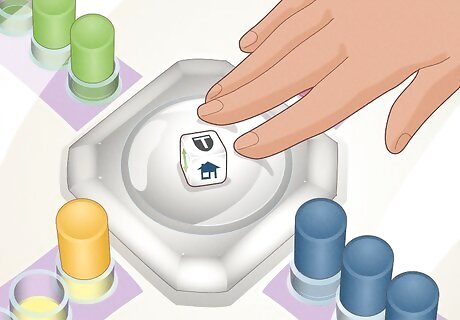
Other versions of Trouble come with a power die and shield card. These extra elements add a whole new level of fun and excitement to this classic game. The power die has 3 symbols: a double-headed arrow, a house, and a shield. It’s inside the Pop-O-Matic alongside the regular number die. The symbols on the power die mean the following: Double-headed arrow: You get to move your peg either forward or backward the number of spaces you rolled on the number die. House: You automatically get to take a peg out from your Home so long as you don’t already have another peg on your Start spot. Shield: This puts you in the possession of the shield card. When you’re holding this card, other players can’t land on your pegs and send them Home. You lose this card when someone else rolls the shield symbol.
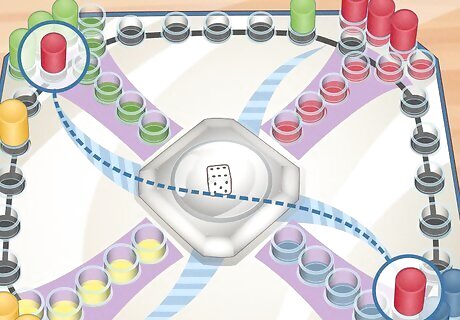
Some Trouble game boards have warp spaces. These spots are marked by grey or white dashed lines that say “Warp” next to them. When you land on this warp spot, you get to move your peg to the warp spot on the opposite side of the board.
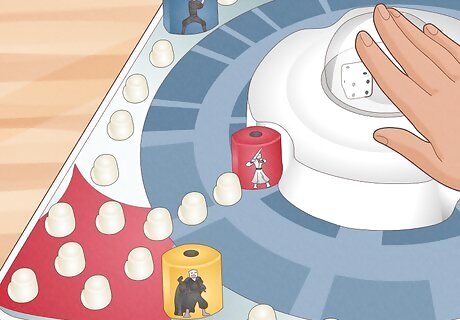
There’s a version of Trouble made just for Star Wars fans. The Star Wars R2-D2 is in Trouble game includes a game board that’s decorated with fun Star Wars theming, a Pop-O-Matic that plays R2-D2 sound effects every time you pop it, as well as a little plastic R2-D2 in the Pop-O-Matic alongside the standard number die. The rules for Star Wars Trouble are the same as the regular version with one added twist. If the R2-D2 is standing after you pop the Pop-O-Matic, that’s the equivalent of rolling a 6. When this happens, you can take a peg out of Home or move a peg that’s already on the track forward 6 spaces. You also get another turn (as you would if you rolled a 6) when R2-D2 is standing. Additionally, you get to move your pegs forward however many spaces the number die tells you to. For example, let’s say you rolled a 3 and R2-D2 is standing. You have a couple options for plays: 1. Use R2-D2 to take a peg out of Home, then move that peg forward 3 spaces. 2. Use R2-D2 to take a peg out of Home, then move a different peg that’s already on the track forward 3 spaces. 3. Use R2-D2 to move a peg forward 6 spaces, then move a different peg forward 3 spaces. 4. Combine R2-D2 and the number die to get a total of 9 (6 + 3) and move one peg forward 9 spaces.


















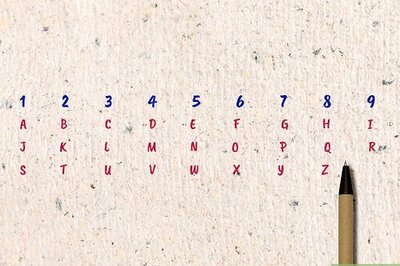
Comments
0 comment